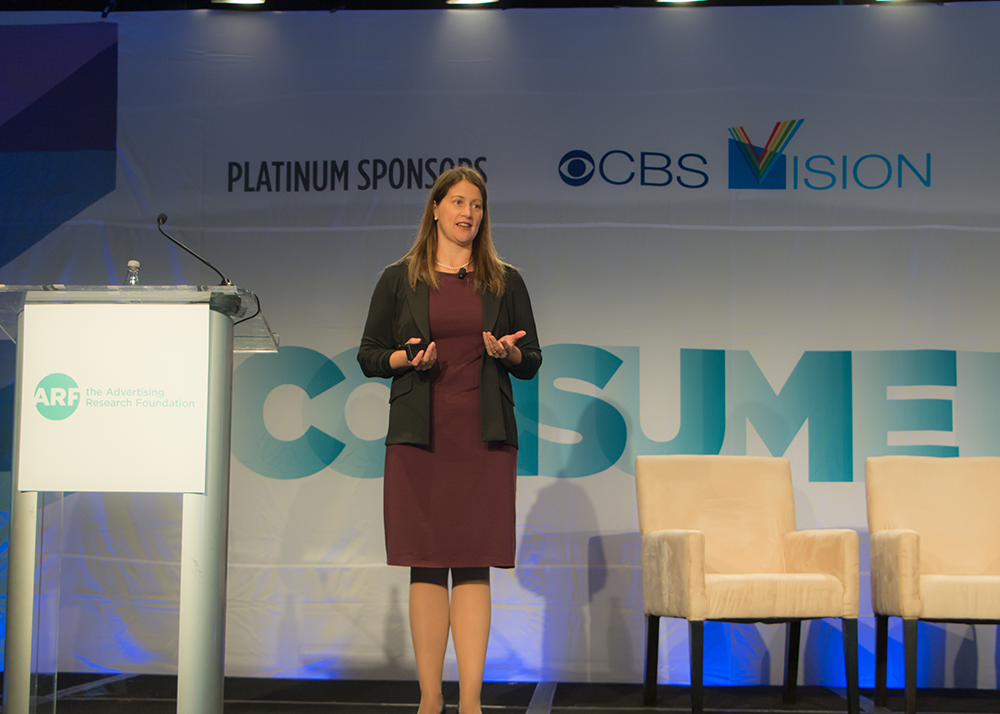
Research and creativity don’t always play well together—a battle of the left brain versus the right brain, if you will. However, big data has the power to bring these two seeming adversaries together by revealing people’s hidden interests and thoughts. And when they are merged, the outcomes can be exceptional, as seen in the David Ogilvy Award Winners. As a platinum sponsor at the recent 64th ARF Annual Conference, CONSUMERxSCIENCE, we took to the stage with new Nielsen research that pinpoints where science and creative collide and shows how the results have the potential to affect entire governments and cultures.

On the first day of the conference, Dr. Carl Marci, EVP, Chief Neuroscientist, Nielsen, was joined by Patty Goldman, VP, Strategy & Evaluation, Ad Council, on stage to explore the increase of socially charged advertising. More than ever, consumers look to purchase brands that align with their own values, in both message and deed, and believe that corporations have a powerful role to play in driving social change. Taking a stance on social and political issues isn’t just for nonprofits anymore, but this type of messaging can be risky if brands don’t understand how their consumers will react before making the leap. Fortunately, the power of neuroscience can help marketers capture conscious and nonconscious consumer response to reduce risk and avoid wasted (or damaging) investment. By sharing lessons learned from testing over 100 PSAs together, Carl and Patty demonstrated that not all creative moments are created equal, and that even the smallest changes can make a big impact—for all brands.
Christine Pierce, SVP, Data Science, Nielsen, (pictured above) kicked off day two with a mainstage presentation on audience based buying. This is the process of using audience segments beyond age and gender (e.g., women with kids who are shopping for a luxury cars) to reach consumers. This way of buying and selling media has been gaining traction among TV advertisers and networks recently. Within this ecosystem, Nielsen data is fueling a majority of the audience-based advertising segments and transaction guarantees in the marketplace. But some advertisers may be over or under estimating audience size if they’re not using a truth set to validate the universe of consumers—ultimately leading to millions of misplaced advertising dollars. Christine explained that by calibrating big data with representative panels, you can more confidently connect real people with their purchases.

Ameneh Atai, SVP, Business Development, Nielsen, and Tristen Norman, Manager, Creative Insights & Planning, GETTY, then unveiled research from a joint study of the psychology behind image perception. Through a survey of over 60,000 respondents across 182 countries, clear patterns emerged around who liked what and why. They concluded that by understanding someone’s personality type, you can predict the types of stock images they most prefer. Getty is now using this data to improve its image recommendation algorithm, creative and marketing strategies.

Closing out the day, Nielsen Catalina Solutions’ Leslie Wood, Chief Research Officer, and Linghan Wang, Senior Manager, Research and Development, shared new research on what it takes to build brands. There has been competing research on which types of consumers brands should target in their advertising: While NCS has uncovered that brand-loyal customers are the most responsive to advertising, Ehrenberg-Bass Institute research points to the importance of ad penetration and recommends targeting light and non-brand loyal consumers. With two opposing viewpoints, NCS conducted a study of 50 brands over 3.5 years to understand which consumers were driving sales. The results showed that each brand had very different shopper patterns. So for the best targeting, a custom approach for each brand is necessary.
From understanding behaviors through neuroscience and image perception, to audience targeting by advanced segmenting and purchase behaviors, we dug deep into what creates good advertising. But that just scratches the surface. For more information, see a full recap of our presentations and more.
